Abstract
During an operational field-trial which was conducted as a part of the WHO Programme for Testing and Evaluating New Insecticides, a study of the safety of o-isopropoxyphenylmethylcarbamate (OMS-33) was carried out. Clinical observations associated with biochemical studies were performed. Minor reactions to over-exposure to OMS-33 were recorded among some spraymen and a few inhabitants. Their incidence was, in operators, mainly associated with heavy skin contamination and insufficient washing during work, or, in inhabitants, with entering the house while it was being sprayed. No cumulative inhibitory effect could be demonstrated on whole-blood or plasma cholinesterase in operators during the 6-week exposure. A pronounced fall in whole-blood cholinesterase activity during the work and a distinct recovery after exposure ceased was established as a daily pattern of the enzyme's activity fluctuation, erythrocyte cholinesterase being much more sensitive to OMS-33 than plasma cholinesterase. In view of the very marked symptomless daily fluctuation in cholinesterase activity and the absence of cumulative inhibitory effect, the conclusion was reached that routine cholinesterase determination has little if any practical value as an early indication of serious exposure to OMS-33. Minor complaints, from which recovery is rapid, serve as an early indication of over-exposure.
OMS-33 can be used safely in malaria eradication programmes provided proper attention is paid to the exercise of those measures of general and personal hygiene which should be practised in any spraying programme.
Full text
PDF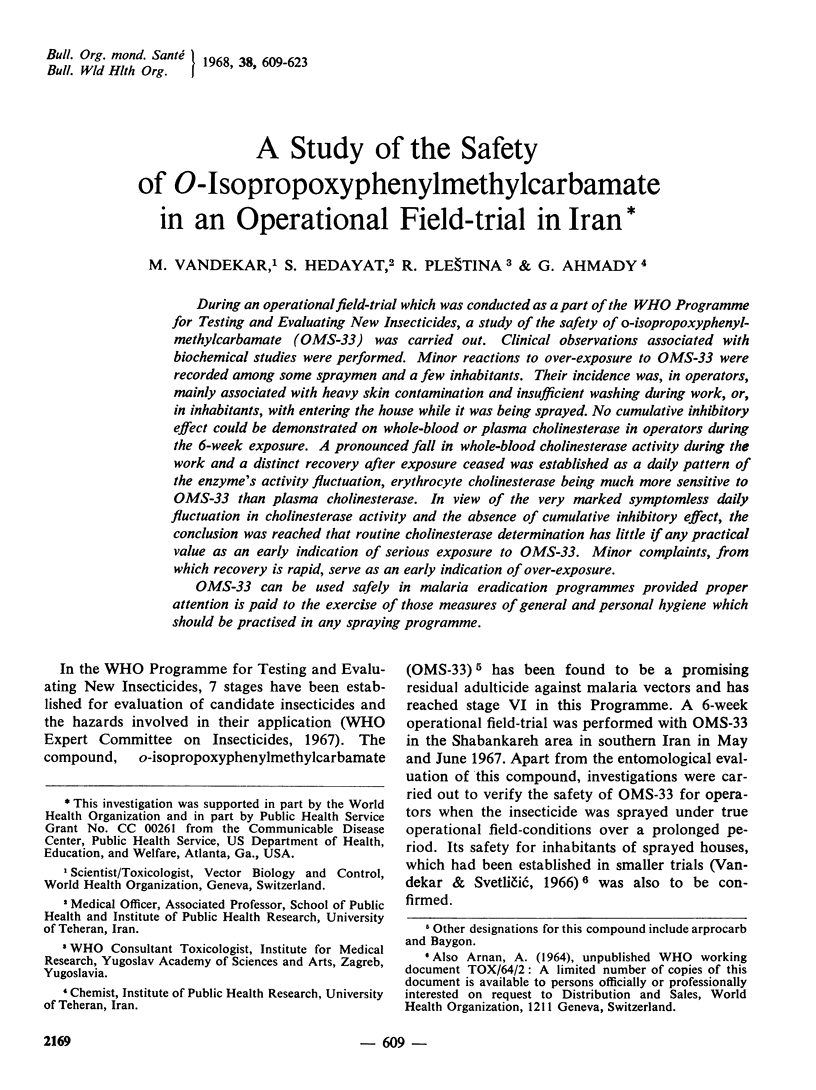
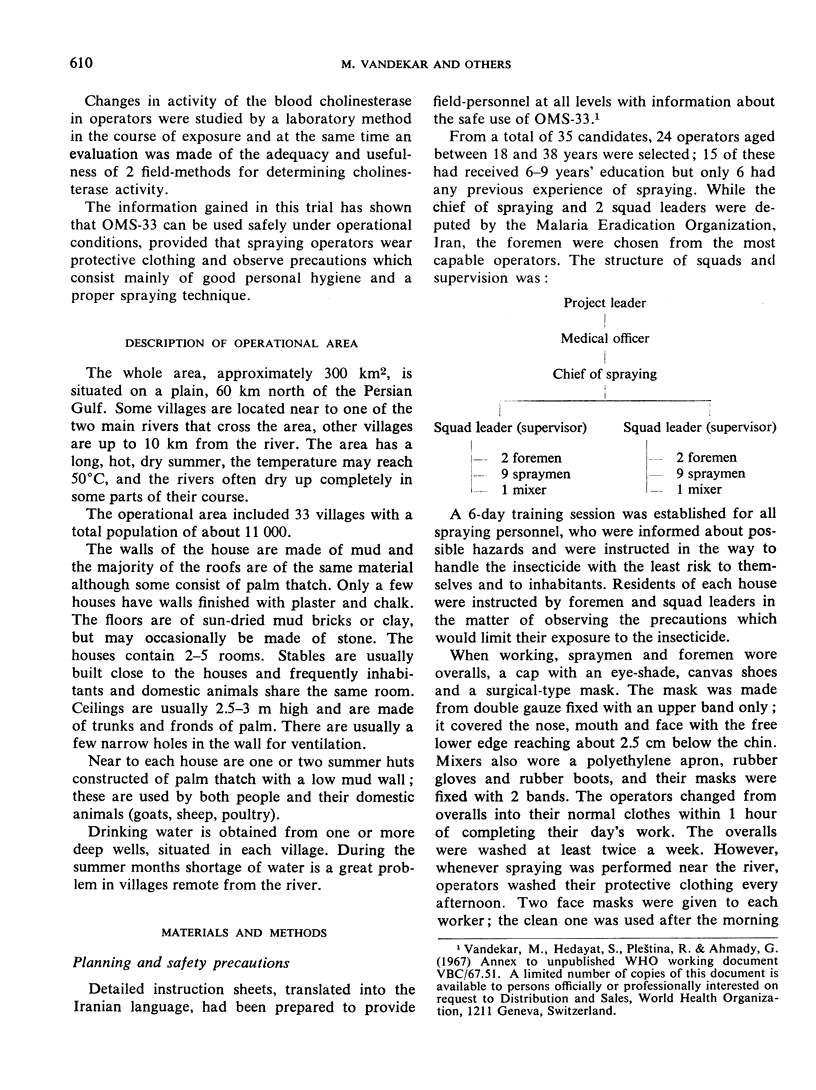
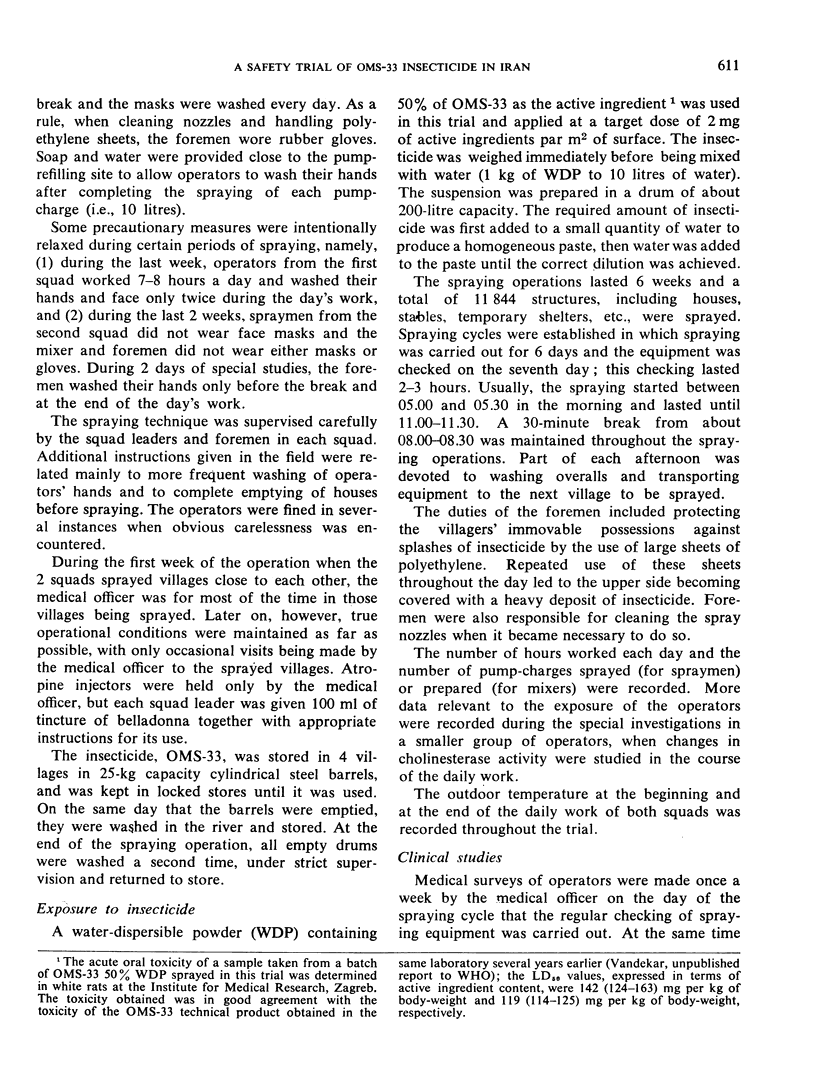


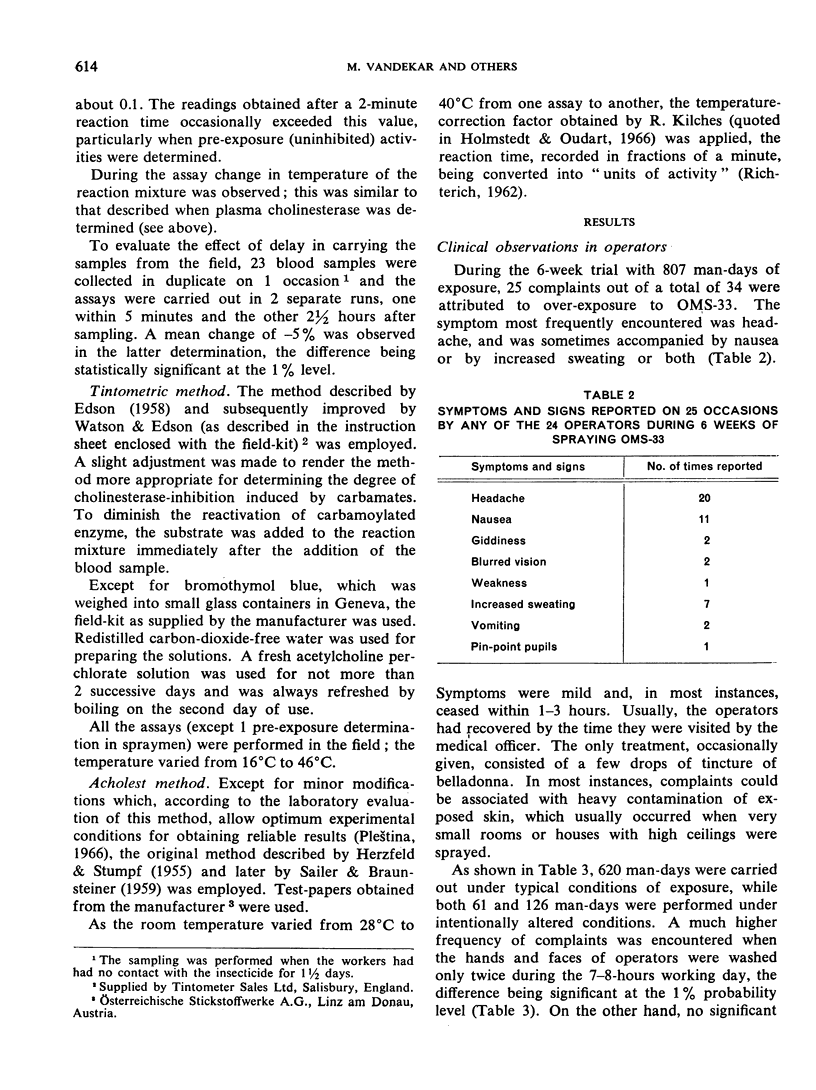
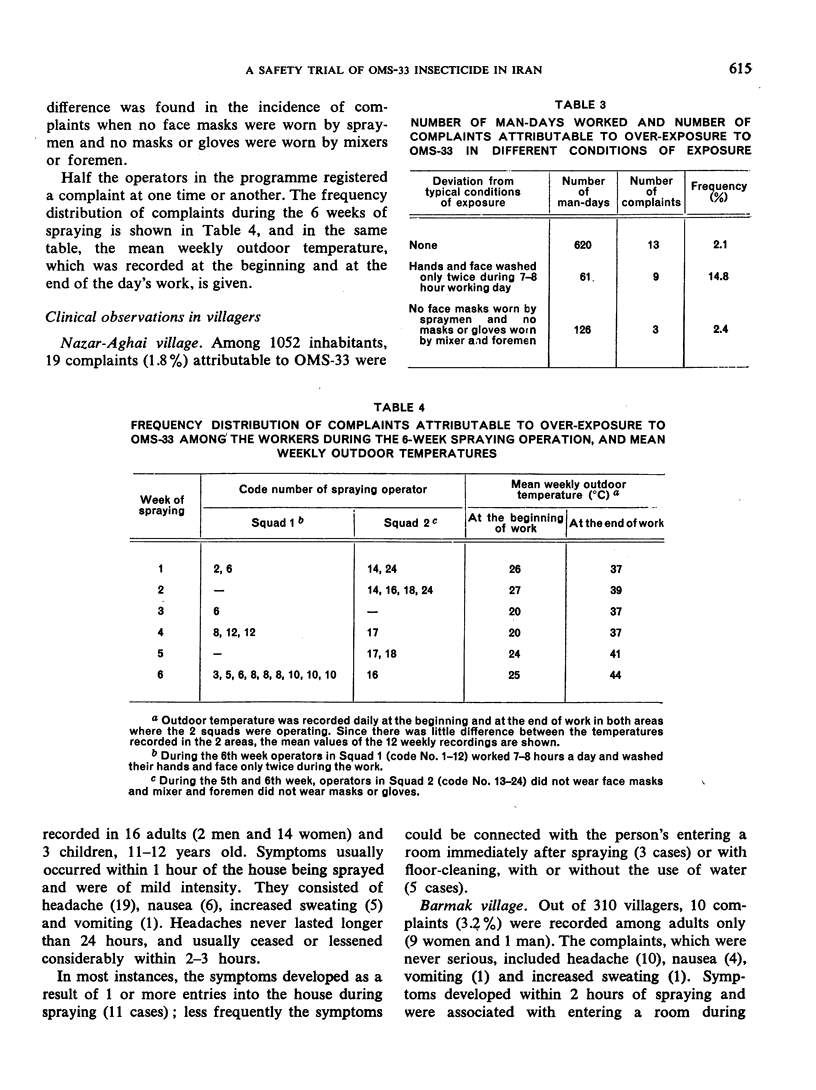
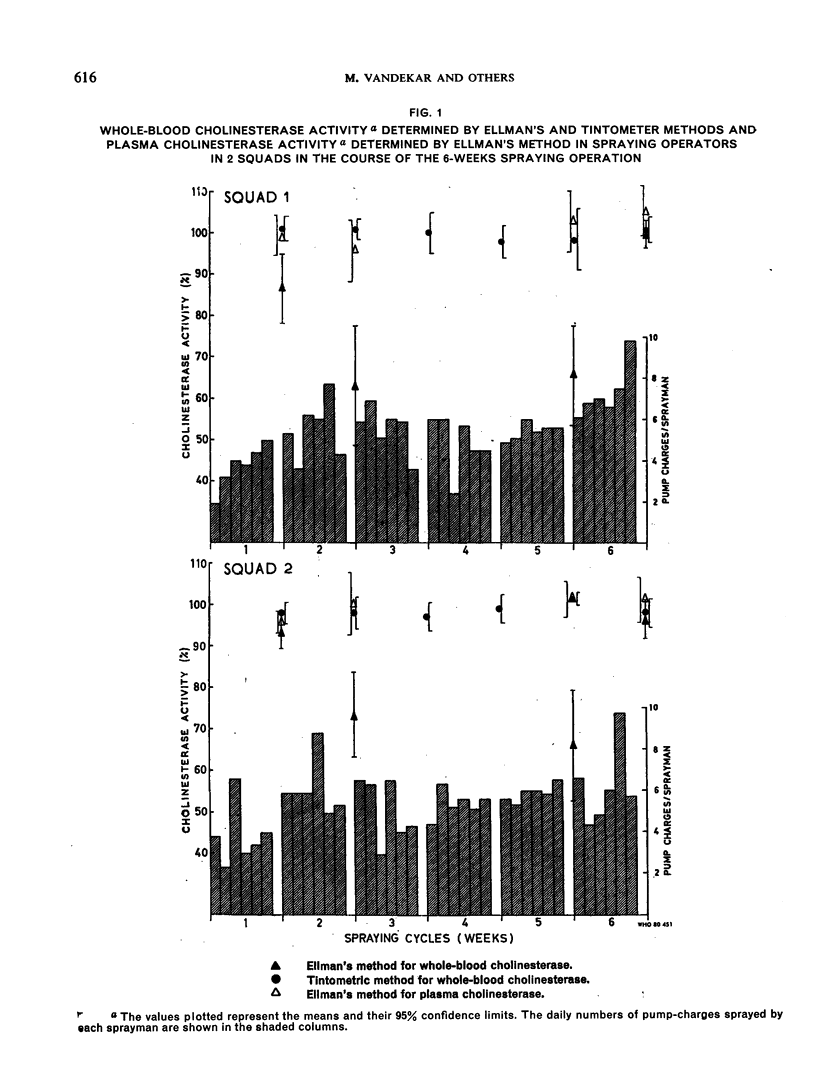

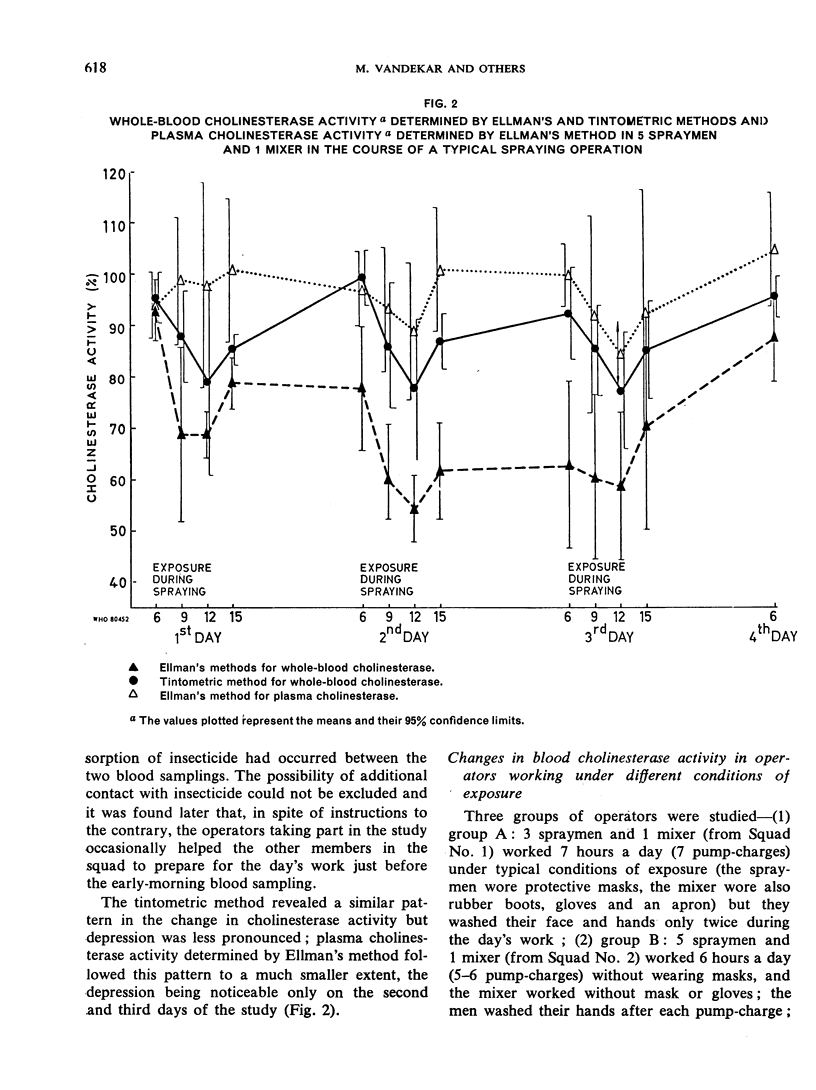

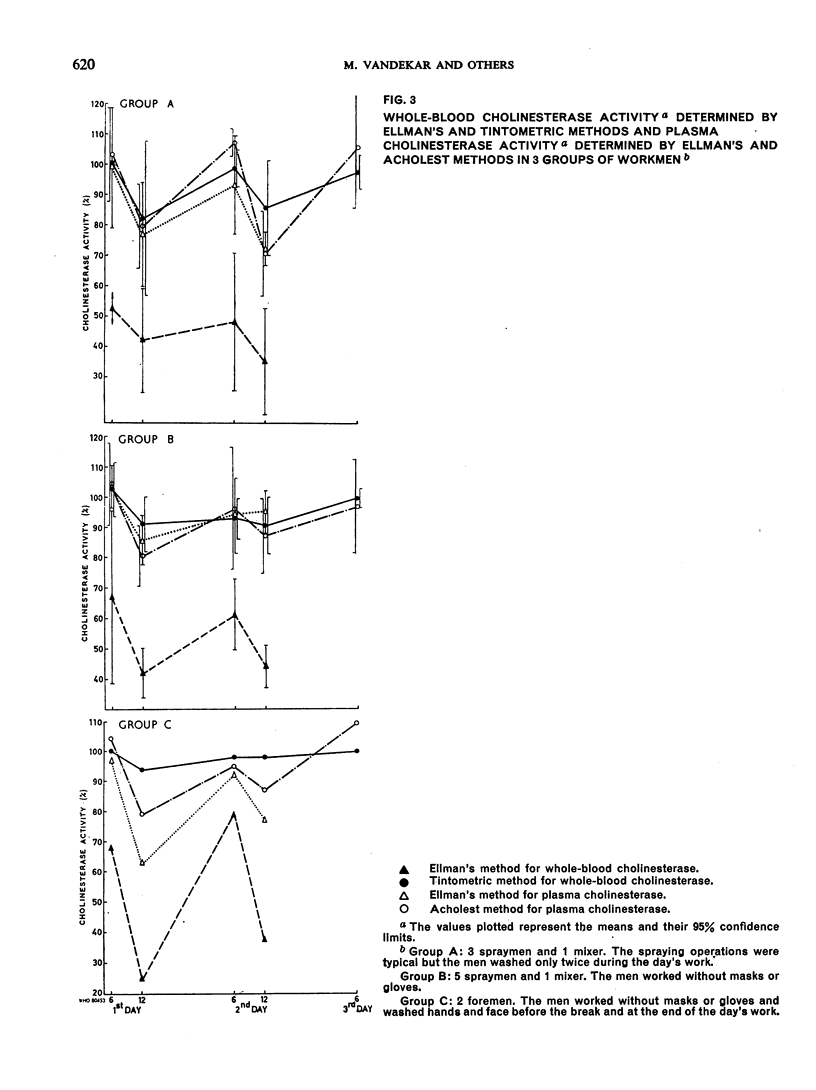
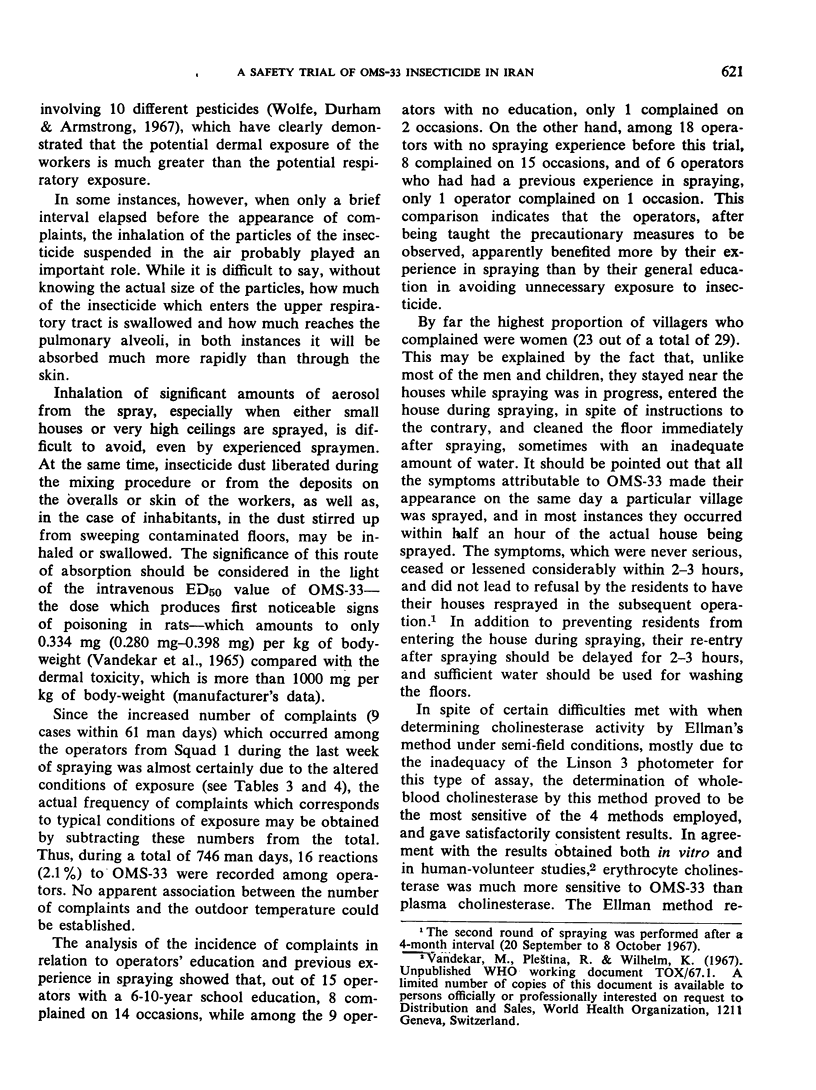

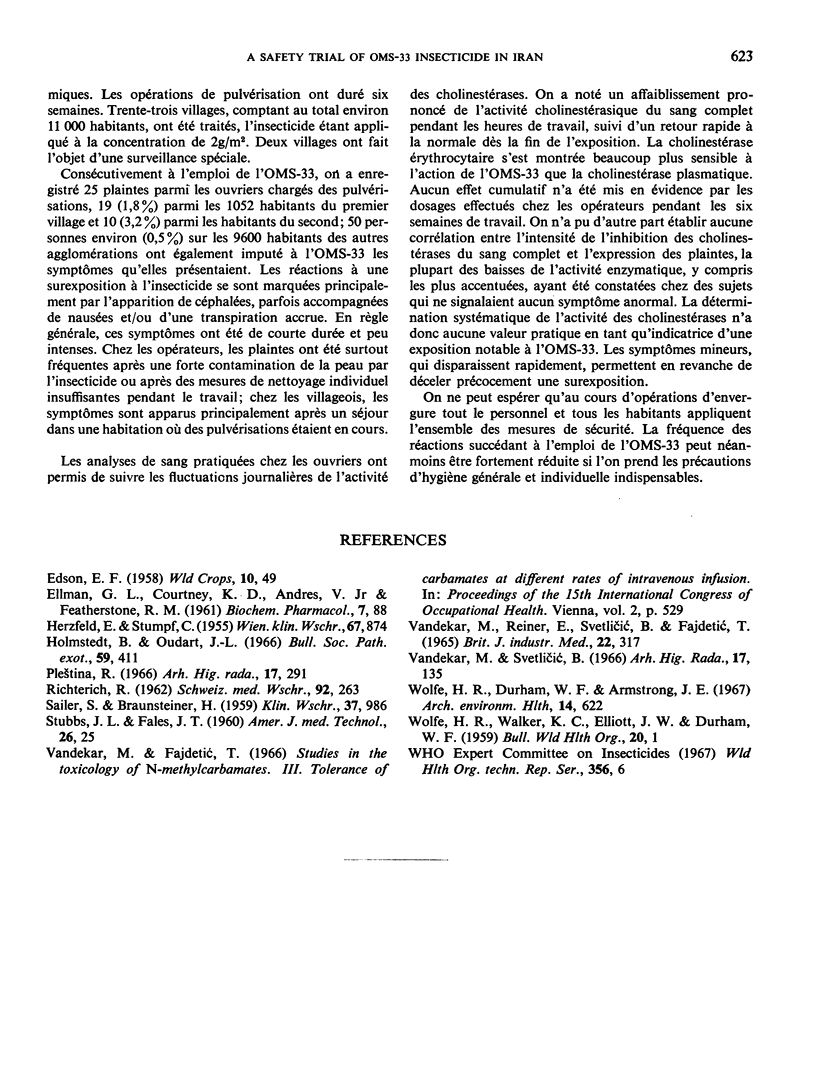
Selected References
These references are in PubMed. This may not be the complete list of references from this article.
- ELLMAN G. L., COURTNEY K. D., ANDRES V., Jr, FEATHER-STONE R. M. A new and rapid colorimetric determination of acetylcholinesterase activity. Biochem Pharmacol. 1961 Jul;7:88–95. doi: 10.1016/0006-2952(61)90145-9. [DOI] [PubMed] [Google Scholar]
- HERZFELD E., STUMPF C. Ein neuer Kurztest zur Bestimmung der Serumcholinesteraseaktivität. Wien Klin Wochenschr. 1955 Nov 11;67(45):874–876. [PubMed] [Google Scholar]
- Holmstedt B., Oudart J. L. Mesure de l'activité cholinestérasique plasmatique sur le terrain au moyen d'un papier test. Bull Soc Pathol Exot Filiales. 1966 May-Jun;59(3):411–426. [PubMed] [Google Scholar]
- Plestina R. Nasa iskustva u primjeni acholest-metode za odredivanje aktivnosti kolinesteraze plazme covjeka. Arh Hig Rada Toksikol. 1966;17(3):291–301. [PubMed] [Google Scholar]
- RICHTERICH R. [Determination of serum cholinesterase by means of an indicator paper]. Schweiz Med Wochenschr. 1962 Mar 3;92:263–265. [PubMed] [Google Scholar]
- SAILER S., BRAUNSTEINER H. [On a new and extremely simple method of determination of serum cholinesterase activity and its clinical significance]. Klin Wochenschr. 1959 Sep 15;37:986–990. doi: 10.1007/BF01485154. [DOI] [PubMed] [Google Scholar]
- STUBBS J. L., FALES J. T. A capillary sampling technique for the determination of cholinesterase activity in red cells and plasma. Am J Med Technol. 1960 Jan-Feb;26:25–32. [PubMed] [Google Scholar]
- Vandekar M., Reiner E., Svetlicić B., Fajdetić T. Value of ED50 testing in assessing hazards of acute poisoning by carbamates and organophosphates. Br J Ind Med. 1965 Oct;22(4):317–320. doi: 10.1136/oem.22.4.317. [DOI] [PMC free article] [PubMed] [Google Scholar]
- Vandekar M., Svetlicić B. Observations on the toxicity of three anticholinesterase insecticides in a village-scale trial and comparison of methods used for determining cholinesterase activity. Arh Hig Rada Toksikol. 1966;17(2):135–150. [PubMed] [Google Scholar]
- WOLFE H. R., WALKER K. C., ELLIOTT J. W., DURHAM W. F. Evaluation of the health hazards involved in house-spraying with DDT. Bull World Health Organ. 1959;20(1):1–14. [PMC free article] [PubMed] [Google Scholar]
- Wolfe H. R., Durham W. F., Armstrong J. F. Exposure of workers to pesticides. Arch Environ Health. 1967 Apr;14(4):622–633. doi: 10.1080/00039896.1967.10664801. [DOI] [PubMed] [Google Scholar]


